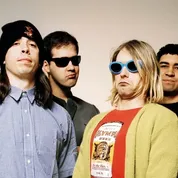
Music and fashion share an undeniable bond. The two mediums coexist like a time capsule, highlighting the societal history of self-expression. Musicians enrich the entertainment experience through fashion, reflected in the styles worn by the public, a revolutionary exchange between performance and listener that has shaped the cultural world.
From the 60s Summer of Love mindset celebrated by icons including Janis Joplin and Jimi Hendrix to the unapologetic trailblazers of the current day like Lady Gaga and Chappell Roan, it is clear that music and fashion evolve hand-in-hand, leaving an unforgettable and rebellious mark as they pioneer throughout the decades.
Music and Fashion in the 1960s
What made the 1960s so iconic stylistically was the birth of free-spirited rebellion in a primarily conservative world. The 60s gave us bright-colored silhouettes of tailored elegance essential to the mod subculture while also embodying the loose and psychedelic styles adored by hippies and anti-war thinkers alike.
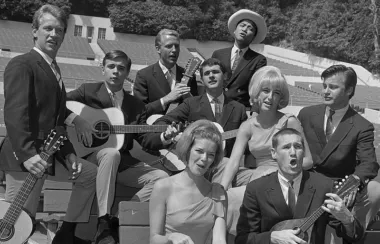
From "You Don't Own Me" To Mod
The early 60s showcased singer-songwriter Lesley Gore performing feminist anthems such as "You Don't Own Me" while wearing a simple, shapeless shift dress accompanied by a delicate pearl necklace. Although her clothing choice, universally classic at the time, was known to be prim and proper, the essence of rebellion remained: A woman of only seventeen in her early 60s demanding autonomy over her own life. "I'm free, and I love to be free."
Women became even more liberated through the colorful "mod" subculture, also known as the "modernists," when British fashion designer Mary Quant presented the mini skirt to the masses, sewn 6-7 inches above the knee. Men wore tailored suits, cashmere jumpers, soft under collared coats, and lapels.
The mods represented a youth eager to escape their parents' traditions, also lovers of listening to music genres such as soul, rhythm, blues, and ska, but desired a more daring approach in their appearance than the generations before them. The Beatles often dressed in the renowned male mod look, impacting the fashion of London audiences at large. Modernists also loved bands like The Who, Small Faces, The Rolling Stones, and YardBirds, and often even tied their looks together with their transport, getting around by Vespa.
Vibrancy in Soul
The adoration for vibrant colors in the 60s continued to be made clear through the essence of elegant powerhouse Aretha Franklin, draped in long, embellished, bright-coloured gowns, feathered dresses, and shimmering sequin dresses. She was deemed the "Queen of Soul", and rightfully so. With her multi-octave vocals and songs like "Respect" and "Think," Franklin insisted on glamorous individuality and an open mind.
Music and fashion viewers can also find beautiful bold pinks, reds, and oranges amongst Mary Wilson and the Supremes. What made these girls so eye-catching was the way they dressed boldly as a trio, their outfits always matching, making for an experience that felt collectively charming as it shimmered in unison for the public eye.
Freedom Is a State of Style
The unbreakable love affair between music and fashion advanced through the mid-late 60s, with the sound of psychedelic rock and hippie styles taking off at full speed. The Vietnam War and established institutions left many people angry, inspiring them to adapt to communal ways of life and experimentative expression.
Legends like Janis Joplin and Jimi Hendrix embodied this way of living, dressing in bell bottoms, paisley designs, fringe, and floral. Joplin decked herself out in flowy clothing and tie-dye, accessorized with oversized sunglasses and bulky jewelry. Although the legendary songs "Piece of My Heart" and "Cry Baby" are willing professions of devotion from oneself to another, Janis's rebellion was more encompassed in a non-conformist attitude, saying things to her listeners like: "Don't compromise yourself, you are all you've got." And "My business is to enjoy and have fun. Why not? If everything ends in the end, right?"
At Woodstock 1969, much like the style within the audience, Jimi Hendrix wore blue bell bottoms and a blue-beaded fringed top, his style spontaneous yet intentional, much like his music and the profound message it delivered. His rendition of "Star Spangled Banner" was a performance and a protest of pure genius, his guitar exuding sounds of despair and suffering, similar to those heard in the war. His barefooted fans worshiped him in the crowd, as the dream for peace appeared now as a tangible hope.
Music and Fashion in the 1970s
The 70s as a decade was a delicious treat to savor, with many different music and fashion trends swarming the world. The 70s era was home to disco, punk, and an unapologetic uprise of expressed androgyny.

Oh, Darling Disco Fashion
The trends of the 60s still lingered generously amongst the popularity of 70s disco, with body-hugging clothes, glitter, three-piece suits, and hot pants present underneath a sparkling disco ball at the club. Those showing up to party in these looks were likely to be enjoying musicians such as Donna Summer, the Bee Gees, Sister Sledge, and many more.
Donna Summer is regarded as the "Queen of Disco," with tracks like "I Love to Love You Baby" and "Spring Affair." But it doesn't stop at her music. Donna Summer was the it-girl of disco. She celebrated "body-hugging" with full force at a 1976 photoshoot, wearing an Elvis-homage, skin-tight jumpsuit covered by sheer overlay and glistening sequin.
The Screaming and Rebellious Styles of Punk Fashion
Music and fashion proved themselves absolute twin flames with the anarchic arrival of punk. The subculture, a stark contrast next to the likes of Disco, dressed instead in darker, ripped-up clothes, narrow silhouettes, and safety pins shoved through tartan. The Stooges, The Damned, The Ramones, and The Clash are just a few of the bands that drew in the ear of a punk connoisseur.
British fashion designer Vivienne Westwood and then partner Malcolm McLaren played a massive role in the success of punk's legendary band The Sex Pistols, with McLaren being the band's manager and Westwood being their stylist. The Sex Pistols released the controversial "God Save the Queen," claiming the royal to be "no human being." When the track was banned by British radio, Westwood protested the ban by renaming her punk apparel shop from "Sex" to "Seditionaries."
Westwood's title track t-shirts for the song became a trademark in punk culture, printed with the graphic dismantling of a smiling Queen Elizabeth. "You don't write a song like 'God Save the Queen' because you hate the English race. You write a song like that because you love them, and you're fed up with them being mistreated." Said Sex Pistol's very own explosive frontrunner, Johnny Rotten.
Glam Rock Fashion's Androgynous Legend
David Bowie became so famous during the 1970s he could be classified as a genre of his own. Listeners of glam rock admired him, but he also sparked the obsession of music lovers from many different individuals. What made David Bowie memorable in the connection between music and fashion was his ability to take risks and surrender to the happening moment with a beautiful braveness and fluidity.
Bowie dressed according to how he felt at any given point in time and never held back: with looks incorporating the iconic eye patch, skinny pants, makeup, pastel colors, dresses, and skirts, he inspired a generation to find pride in their androgynous declarations and to feel a genuine pull to style that came from within, rather than one solely based on trend. 70s songs like "Starman," "Fame," and "Changes" contributed to David Bowie's legendary success, making him so renowned that we consistently notice his powerful gender-bending impacts in today's fashion.
Music and Fashion in the 1980s
Music and the 80s flaunted a craze for big hair, leather jackets, leggings, neon, and power dressing. It was the decade when music videos became as crucial as songs. Pop star and fashion icon Madonna rose to international stardom, Michael Jackson released 1982's Thriller, and the genre New Wave made a significant name for itself.
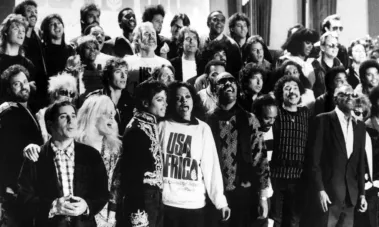
The Music Video: Fashion's Canvas
Music and fashion became even more rapidly accessible in 1981 when MTV released their very first music video: "Video Killed the Radio Star" by the Buggles. The MTV phenomenon enhanced music and fashion's famous formula even further: the public mirrored the styles portrayed by their favourite stars.
The leather jacket remained a loved and go-to closet item around the time of Michael Jackson's release of the unforgettable dance music video for "Thriller" in 1982, wearing a red and black leather jacket with big shoulders and a triangular shape running down the middle.
In the music video for Madonna's 1984 "Like a Virgin," she bounces around on camera, a cluster of statement jewelry dangling around her neck and bangles around her wrist, a popular choice of accessorizing at the time. In the video, she wears purple leggings underneath a belted dress, another beloved 80s trend, as she dances in a gondola, drifting down the Venice canals.
Shoulder Pads: The Statement of Power Dressing
Power dressing was a prominent and influential aspect of the overall 80s persona, a polished aesthetic that inspired women to dress themselves with authority in a male-dominated society. It included the popularity of shoulder pads sewn into tailored suits and was structured in such a way that demanded women be taken seriously, putting forth an essence of command and achievement.
The adored 80s music and fashion popstar Madonna was making statements by utilizing power-dressing, along with Annie Lennox of the Eurythmics, known to wear shoulder pads in her suits on stage. As was Grace Jones, notably in her eclectic music video for "I've Seen That Face Before."
New Wave Fashion
If punk suddenly became a feather, you'd hear sounds of new wave in the air; a blended, melodic-focused genre that pulls inspiration from punk rock, pop, funk, art rock, and reggae. Instrumentally, spacey, dark synth met with keyboards and larger-than-life drums was at the heart of it. Although New Wave first emerged in the 1970s as a less aggravated derivation of punk, it gained popularity in the 80s, with bands like New Order, Tears for Fears, A-ha, the Eurythmics, and Culture Club.
Much like Culture Club's Boy George, listeners of New Wave tended to lean toward a more so androgynous look, with dyed hair, vintage accessories, and a creative use of makeup. New Wave folk were also seen power-dressing in the 80s, with shoulder pads and pairing a turtleneck sweater with high-waisted pants.
Music and Fashion in the 1990s
The 90s was an era that let people know it was cool to be laid back. Grunge, hip hop, and, flamboyant bands like the Spice Girls were significant parts of this decade, resulting in iconic 90s fashion trends such as baggy pants, graphic tees, Doc Martens, combat boots, denim overalls, and slip dresses.
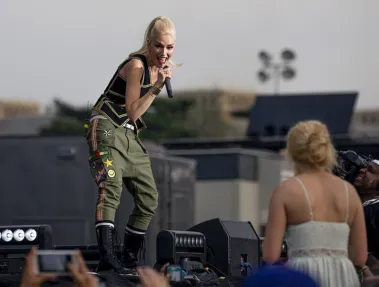
It's Good to Be Grunge
Kurt Cobain, the frontman of the grunge band Nirvana is one of the most significant examples of how musicians and fashion have a tremendous impact on their listeners and the way they decide to dress. The band sold over 27 million albums, and that was just in the states alone.
Cobain wore blue denim jeans, sneakers, and a t-shirt with a plaid flannel thrown over the shoulders. While he wasn't writing genius smash hits such as "Come as You Are," he was smoking cigarettes in baggy sweaters with unkempt, shaggy blonde hair. Not only was Kurt's look made cool, but it was achievable, affordable, and effortless for the masses, who began to emulate this style quickly.
This look may have taken little next to no work, but Cobain's gritty energy combined with a non-materialistic approach drove the aim of grunge home: to be cool in who you are rather than how expensive or glamorous you look. In one of the most famous grunge music videos of all time, Nirvana's "Smells Like Teen Spirit", Kurt is wearing jeans with a striped shirt over a long-sleeved tee.
The focal point for Nirvana was the rawness of the music, rather than external motives, ironically making Nirvana and grunge one of the most fashionable influences of our times. Other influential grunge artists who made this style loved by many included Pearl Jam, Hole, Temple of the Dog, and PJ Harvey.
Everybody Loves Hip-Hop Fashion
Music and fashion became monumental in the 90s through hip-hop music, with the rapid trend of timberland shoes, baggy pants, oversized hoodies, baseball caps, harem pants, and Kangol hats. 90s artists who were simultaneously dropping trailblazing hip-hop tracks and setting trends included Biggie Smalls, AKA The Notorious Big, Aaliyah, girl group TLC, Tupac, Missy Elliott, Lil Kim, and so many more.
Tupac Shakur, a rap artist of songs including "Only God Can Judge Me" and "Unchained," was the image of West Coast hip hop - often wearing oversized looks like baggy overalls paired with a blue or red bandana around his forehead. Tupac and Biggie Smalls contributed to the acclaim of the Timberland boot, a shoe that took 90s style by storm.
Hip-hop's darling Aaliyah represented the aesthetic of chic-athleisure, looks that were comfy and exposed the midriff, which sparked the transition between sports clothes moving from more than just apparel for activity, and instead to a palace that made athleisure a fashion tactic used to look really good. Girl group TLC embraced the loose-hanging denim overalls at the Billboard Music Awards 1992.
The Kangol bucket hat was a famous accessory worn by LL Cool J. This iconic British hat remains a popular choice of headwear today.
Spice up Your Style
The 90s #1 girl group was, of course, none other than the Spice Girls, with Scary, Baby, Ginger, Sporty, and Posh Spice. In 1996, they released "Wannabe," a pop song that would not only blow up in Britain but be danced to and enjoyed by people internationally.
The Spice Girls were not just big in music; they are considered fashion icons, with Geri Holloway's (ginger spice) tight, strapless Union Jack dress, still referenced today and worn at Halloween parties across the world, and Victoria Beckham (posh spice) opening her own high-end designer brand, rather than continuing in the direction of music. The 90s will forever be remembered by how these girls became a portrait of the decade.
Music and Fashion in the 2000s
Much like the 90s, the early 2000s loved a two-piece look centered around the midriff and a low rise of jeans. With sparkly belts and jewelry, the 2000s showed off its adoration for bedazzlement. The denim dress (think Justin Timberlake and Britney Spears in all matching denim at the 2001 American Music Awards), the tube top, crimped hair, and big sunglasses were all stylistic pinpoints essential to the 2000s.
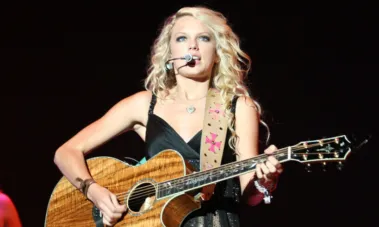
2000s queens like Britney Spears, Beyonce and Christina Aguilera all embraced an exposed belly button and low-rise jeans, and so the look prevailed in popularity. Spears was renowned for rocking a two-piece outfit and a bellybutton ring, such as her look at the 2000s MTV awards in black baggy pants and a crop top titled "Control Freak." Christina was a pioneer for the low-rise look, as seen at the movie "8 Mile" premiere, wearing a pair of ripped low-rise jeans and a plain white crop top.
From the 60s to the 90s to the 2000s, and to this very moment, one can take a look at the historic, shared trends between music and fashion to understand how now, in 2024, the majority of today's favored looks are inspired by those in the decades before this one.
How Have Past Decades of Music and Fashion Shaped Today’s Trends?
So how have past trends born from music and fashion impacted those of today, now in 2024? Artists like David Bowie carved a brave androgynous path for Lady Gaga, Harry Styles, and Chappel Roan, who dress according to a moment propelled by the unexpected and how they want to showcase a specific performance. The baggy, oversized look that Billie Eilish lives and breathes for was made famous by hip-hop artists in the 90s, similar to how the 80s leather jacket remains and how the 60s and 70s vibrant colors and bell-bottomed hippie look still portrays a love for freedom and peace.
Music and fashion make up who we are indefinitely, and it is a beautiful thing to not only anticipate how music and fashion will shape who we are as a society in the years to come but also how we have decided to represent individuality in years before now. Long live music and fashions impeccable ability to affect expression and culture, enriching the artistic experience within life as whole.


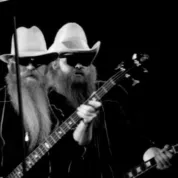
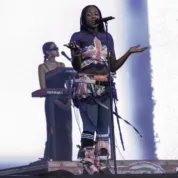



Leave a Reply!